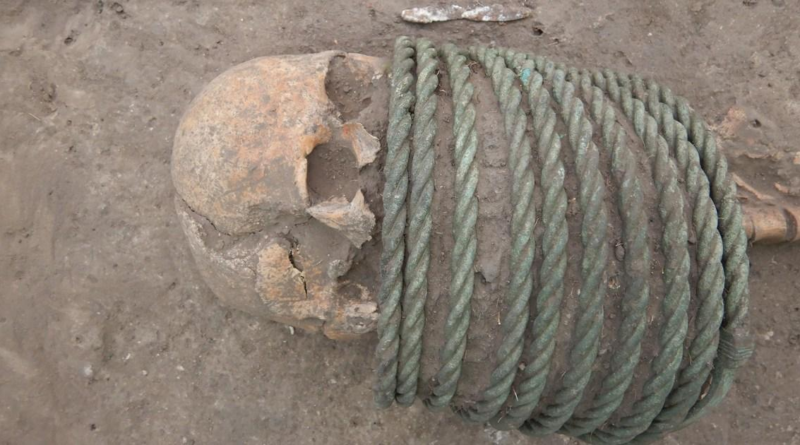Mystery Dark Age graveyard reveals people buried with buckets on their feet – Metro.co.uk
NEWS… BUT NOT AS YOU KNOW IT
Skeletons with wooden buckets on their feet and rings around their necks have been discovered in a cemetery from the Dark Ages.
More than 100 skeletons have been unearthed in the 1,000-year-old graveyard near Kyiv, Ukraine.
The mysterious burial site is believed to be a pagan-era or early Christian cemetery, and provides a glimpse into the Dark Ages – the period in time between the fall of the Roman Empire and the beginning of the Italian Renaissance.
Archaeologists believe the unusual adornment is ceremonial. Alongside those buried were also axes, swords, spears, jewellery and food remains, such as eggshells and chicken bones.
Of the 107 graves, ‘most of the identified burials were deposed in wooden coffins’ said lead researchers Dr Vsevolod Ivakin and Dr Vyacheslav Baranov. The team presented their findings at at the annual meeting of the Archaeological Institute of America.
Some of the artefacts found are similar to those recovered in the Baltics, suggesting that some of those buried may have come from the region.
The two researchers also said the weapons were typical for Kyivan Rus – a medieval political federation which is now Belarus – and northeastern Europe, while a stone alter found at the site could have been used for pagan or early Christian rituals.
The graveyard contained both male and female skeletons, but only the females had elaborate neck rings – suggesting they were ‘a kind of social marker’, said the team.
However, some males were also found buried with their feet in wooden buckets, suggesting it may have been part of funerary rituals.
‘Other elements, such as buckets from two Ostriv male graves, are also found at 11th-century Prussian cremation and Pomeranian and Masovian inhumation cemeteries of military elites,’ the team said, speaking to LiveScience.
At the time the cemetery was in use, people in the region were converting to Christianity as it began to make its way through Eastern Europe.
The graveyard was excavated between 2017 and 2022, but the ongoing Russian invasion of Ukraine has paused many excavations in Ukraine – including this one.
MORE : Elite sniffer dogs help archaeologists unearth 3,000-year-old skeleton
MORE : Murderer serving 24 years in jail pardoned to fight in Ukraine after just one year
MORE : Spanish right-wingers fume over depiction of Jesus that’s way too sexy
Privacy Policy
Get us in your feed



